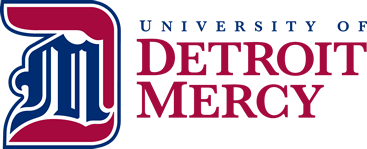Contact
The guidelines presented here should not be taken as legal advice. Detroit Mercy faculty must adhere to copyright law when posting content to their online course sites.
Guidelines
- Faculty should not post copyrighted content to their course site if they do not have permission or if they are unsure whether they have permission. The Instructional Design Studio staff is available to assist in making a judgement regarding fair and acceptable use but cannot provide legal advice.
- When posting a scanned source with permission from the copyright holder, a copyright permission statement should be included with the item and a copy of the permission letter should be included as a hidden item alongside the visible source.
- All content not created by the professor for the course should be appropriately cited.
- Generally, faculty can link to copyrighted content hosted outside the course site. This is considered providing instructions for how to locate the content rather than providing the content itself.
- The “Instructional purposes” rationale does not provide blanket fair use permission.
- Content provided as fair use must be in service of a pedagogical goal, not for entertainment or aesthetic purposes.
- Content provided as fair use should be firmly grounded in educational activities of the course; faculty should make it clear to students why the content was selected (rather than other, similar content); where appropriate, the content should be supplemented with instructional activities.
- Generally, content cannot be provided under fair use when it was expressly created for use in a course like the one it is being used in (e.g., scanned workbook pages, textbook or reader excerpts, etc.).
- Faculty should post permalinks links to a source (article or electronic book) page in the University Libraries catalog; this page provides students with a current link directly to the source in one or more of the Libraries’ subscription databases.
- Access to copyrighted video content provided as fair must be limited to students enrolled in the course and should take advantage of streaming services available at the University to limit students’ ability to download, copy, or redistribute.
- Copyrighted images provided as fair use should be presented at a screen resolution unfit for high quality printing.
Additional Reading and References
Peggy Hoon, J. (2007). Using Copyrighted Works in Your Teaching - FAQ. Retrieved from Know Your Copyrights: https://www.knowyourcopyrights.org/storage/documents/kycrfaq.pdf
Starr, L. (2010, May 25). The Educator's Guide to Copyright and Fair Use. Retrieved from Education World: https://www.educationworld.com/a_curr/curr280a.shtml
U.S. Copyright Office, Library of Congress. (n.d.). More Information on Fair Use. Retrieved from U.S. Copyright Office: https://www.copyright.gov/fair-use/more-info.html
University Libraries, University of Detroit Mercy. (2017, January 01). The TEACH Act. Retrieved from University of Detroit Mercy Libraries / Instructional Design Studio: https://libraries.udmercy.edu/page.php?item_id=58
University Libraries, University of Rhode Island. (2019, July 25). Fair Use and Copyright for Online Education: Copyright. Retrieved from Libguides @ URI: https://uri.libguides.com/fairuse
University of Detroit Mercy Librarians. (2919, June 13). Open Education Resources. Retrieved from University of Detroit Mercy Libraries Guides: https://udmercy.libguides.com/OER
University of Detroit Mercy Libraries / Instructional Design Studio. (2019, September 24). Link to a Source in the Libraries' Catalog. Retrieved from Instructional Design Studio Help for Faculty: https://libraries.udmercy.edu/page.php?item_id=487
Permalink Last updated 07/21/2020 by R. Davidson


